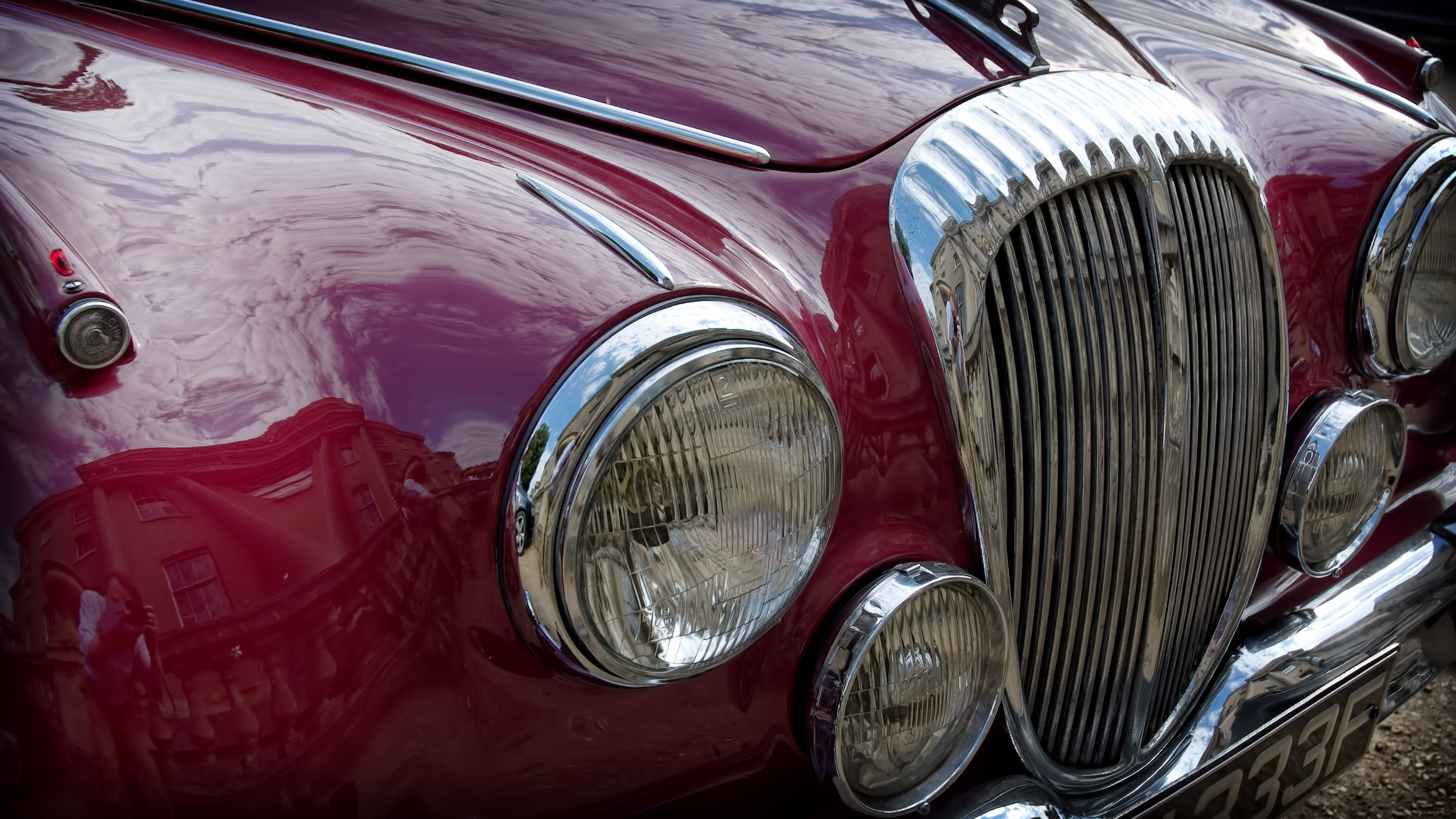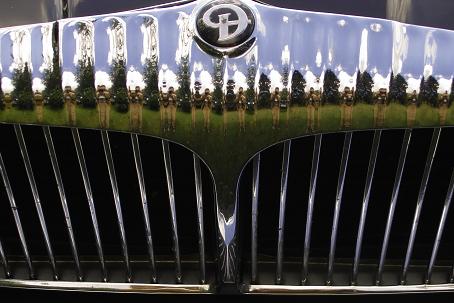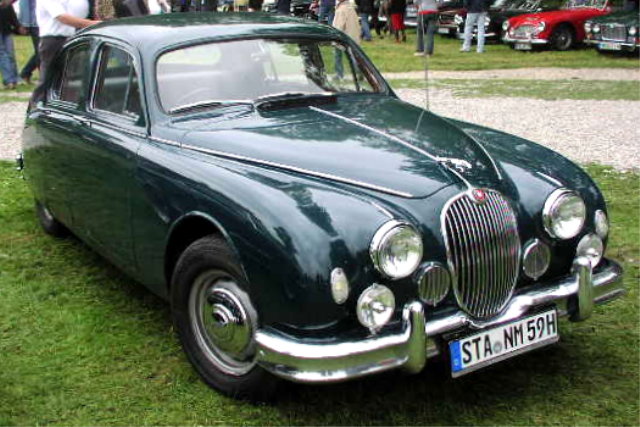|
Daimler 250
The Daimler 2.5 V8/V8-250 is a four-door saloon which was produced by The Daimler Company Limited in the United Kingdom from 1962 to 1969. It was the first Daimler car to be based on a Jaguar platform, the first with a unit body, and the last to feature a Daimler engine after the company was bought from the Birmingham Small Arms Company by Jaguar Cars in 1960. The engine is the hemispherical head V8 designed by Edward Turner and first used in the Daimler SP250 sports car. Background and development Daimler had entered the medium-sized saloon market in 1932 with the Daimler Fifteen but left the market with the end of production of the Conquest in 1957. Attempts to re-enter the market with Turner's 2.5-litre V8 included development of the DN250 based on the Vauxhall Cresta PA's unibody, which was discontinued before Jaguar's purchase of Daimler, and the DP250 two-door saloon based on the SP250, which was discontinued by Jaguar after it bought Daimler. Despite claiming i ... [...More Info...] [...Related Items...] OR: [Wikipedia] [Google] [Baidu] |
Daimler Company
The Daimler Company Limited ( ), prior to 1910 The Daimler Motor Company Limited, was an independent British motor vehicle manufacturer founded in London by H. J. Lawson in 1896, which set up its manufacturing base in Coventry. The company bought the right to the use of the Daimler name simultaneously from Gottlieb Daimler and Daimler-Motoren-Gesellschaft of Cannstatt, Germany. After early financial difficulty and a reorganisation of the company in 1904, the Daimler Motor Company was purchased by Birmingham Small Arms Company (BSA) in 1910, which also made cars under its own name before the Second World War. In 1933, BSA bought the Lanchester Motor Company and made it a subsidiary of Daimler Company. Daimler was awarded a Royal Warrant to provide cars to the British monarch in 1902; it lost this privilege in the 1950s after being supplanted by Rolls-Royce. Daimler occasionally used alternative technology: the Knight engine which it further developed in the early t ... [...More Info...] [...Related Items...] OR: [Wikipedia] [Google] [Baidu] |
Jaguar Cars
Jaguar (, ) is the luxury vehicle brand of Jaguar Land Rover, a British multinational car manufacturer with its headquarters in Whitley, Coventry, England. Jaguar Cars was the company that was responsible for the production of Jaguar cars until its operations were fully merged with those of Land Rover to form Jaguar Land Rover on 1 January 2013. Jaguar's business was founded as the Swallow Sidecar Company in 1922, originally making motorcycle sidecars before developing bodies for passenger cars. Under the ownership of S. S. Cars Limited, the business extended to complete cars made in association with Standard Motor Co, many bearing ''Jaguar'' as a model name. The company's name was changed from S. S. Cars to Jaguar Cars in 1945. A merger with the British Motor Corporation followed in 1966, the resulting enlarged company now being renamed as British Motor Holdings (BMH), which in 1968 merged with Leyland Motor Corporation and became British Leyland, itself to be natio ... [...More Info...] [...Related Items...] OR: [Wikipedia] [Google] [Baidu] |
Viscous Coupling Unit
A viscous coupling is a mechanical device which transfers torque and rotation by the medium of a viscous fluid. Design Rotary viscous couplings with interleaved, perforated plates and filled with viscous fluids are used in automotive systems to transmit torque. The device consists of a number of circular plates with tabs or perforations, fitted very close to each other in a sealed drum. Alternate plates are connected to a driving shaft at one end of the assembly and a driven shaft at the other end. The drum is filled with a dilatant fluid, often silicone-based, to about 80% by volume. When the two sets of plates are rotating in unison, the fluid stays cool and remains liquid. When the plates start rotating at different speeds, the shear effect of the tabs or perforations on the fluid will cause it to heat and become nearly solid because the viscosity of dilatant fluids rapidly increases with shear. The fluid in this state will effectively glue the plates together and transm ... [...More Info...] [...Related Items...] OR: [Wikipedia] [Google] [Baidu] |
Mechanical Fan
A fan is a powered machine used to create a flow of air. A fan consists of a rotating arrangement of vanes or blades, generally made of wood, plastic, or metal, which act on the air. The rotating assembly of blades and hub is known as an ''impeller'', ''rotor'', or ''runner''. Usually, it is contained within some form of housing, or case. This may direct the airflow, or increase safety by preventing objects from contacting the fan blades. Most fans are powered by electric motors, but other sources of power may be used, including hydraulic motors, handcranks, and internal combustion engines. Mechanically, a fan can be any revolving vane, or vanes used for producing currents of air. Fans produce air flows with high volume and low pressure (although higher than ambient pressure), as opposed to compressors which produce high pressures at a comparatively low volume. A fan blade will often rotate when exposed to an air-fluid stream, and devices that take advantage of this, such ... [...More Info...] [...Related Items...] OR: [Wikipedia] [Google] [Baidu] |
Autocar (magazine)
''Autocar'' (originally ''The Autocar'') is a weekly British automobile magazine published by the Haymarket Media Group. It was first published in 1895 and refers to itself as "the world's oldest car magazine". There are now several international editions, including for China, India, New Zealand, and South Africa. History The publication was launched as ''The Autocar'' by Iliffe and Son Ltd. "in the interests of the mechanically propelled road carriage" on 2 November 1895 when, it is believed, there were only six or seven cars in the United Kingdom. L. J. K. Setright suggests that the magazine was set up by Henry Sturmey as an organ of propaganda for Harry J. Lawson, founder of the Daimler Company and a journalist on the magazine in its early days. Henry Sturmey stood down as editor of ''The Autocar'' magazine and left the company in 1901. ''Autocar'' claims to have invented the road test in 1928 when it analysed the Austin 7 Gordon England Sunshine Saloon. ' ... [...More Info...] [...Related Items...] OR: [Wikipedia] [Google] [Baidu] |
Jaguar XK6 Engine
The Jaguar XK is an inline 6-cylinder dual overhead camshaft (DOHC) engine produced by Jaguar Cars between 1949 and 1992. Introduced as a 3.4-litre, it earned fame on both the road and track, being produced in five displacements between 2.4 and 4.2-litres for Jaguar passenger cars, with other sizes being made by Jaguar and privateers for racing. A de-rated version was also used in certain military vehicles built by Alvis and Daimler. Early development Prior to World War II, SS Cars (which changed its name to ''Jaguar'' in 1945) used three engines produced by the Standard Motor Company: a 1.5-litre 4-cylinder and 6-cylinder engines of 2.5 and 3.5 litres. Sir William Lyons and his engine designers; William Heynes (Chief Engineer), Walter Hassan, Claude Baily, and Harry Weslake are widely reported to have discussed a new range of replacements whilst fire-watching on the roof of the SS factory in Swallow Road, Coventry, during German World War II bombing raids. Rather th ... [...More Info...] [...Related Items...] OR: [Wikipedia] [Google] [Baidu] |
Jaguar Mark 1
The Jaguar Mark 1 is a British saloon car produced by Jaguar between 1955 and 1959. It was referred to in contemporary company documentation as the Jaguar 2.4 Litre and Jaguar 3.4 Litre. Its designation as Mark 1 was retroactive, following its October 1959 replacement by Jaguar's 2.4-litre Mark 2. The 2.4 Litre was the company's first small saloon since the end of its 1½ and 2½ Litre cars in 1949, and was an immediate success, easily outselling the larger much more expensive Jaguar saloons. The 2.4 Litre saloon was announced on 28 September 1955. The 3.4 Litre saloon announced 17 months later in the U.S. on 26 February 1957Improved Model Of Jaguar Car. ''The Times'', Wednesday, 27 Feb 1957; pg. 7; Issue 53776 was designed for the American market and was not at first freely available on the domestic market. History In 1951 Jaguar relocated to Daimler's Browns Lane plant which provided not merely sufficient production capacity for their existing range, but enabled them t ... [...More Info...] [...Related Items...] OR: [Wikipedia] [Google] [Baidu] |
Daimler DR450
The Daimler DR450 is a limousine variant of the Majestic Major DQ450 saloon. Produced from 1961 to 1968, it was the last complete car designed by The Daimler Company Limited. Intended for the carriage trade, as an executive express or as a hire car for those needing something larger than a five-seater saloon, the DR450 was produced in numbers close to those of the Majestic Major saloon on which it was based. Design and specifications The chassis A chassis (, ; plural ''chassis'' from French châssis ) is the load-bearing framework of an artificial object, which structurally supports the object in its construction and function. An example of a chassis is a vehicle frame, the underpart ... was longer than for the Majestic Major and the necessarily flat glass of the three side-windows no longer could be let flow with the body-shape. The equally flat-windowed but bulbous Jaguar Mark X was released to the market the same year. The 4,561 cc (278 cubic inch) hemi-head eng ... [...More Info...] [...Related Items...] OR: [Wikipedia] [Google] [Baidu] |
Daimler DK400
The Daimler DK400, originally Daimler Regina DF400, was a large luxury car made by The Daimler Company Limited between 1954 and 1959 replacing their Straight-Eight cars. Distinguished, after the Regina, by its hooded headlights it was Daimler's last car to use their fluid flywheel transmission. Limousine The Regina, DF400 and DK400 chassis was generally equipped with steel limousine bodywork by Carbodies (identified as DK400B) with a drop division, three occasional seats and more luxurious trim in the rear compartment than in the DK400A owner-driver car. The Regina limousine was shown at the Earls Court Show in October 1954 and then described as being built on a special edition of the Regency chassis.New Daimler Models. ''The Times'', Thursday, Sep 30, 1954; pg. 3; Issue 53050 Some chassis were bodied as hearses and at least one was equipped with a coupé body for Lady Docker. An unusual feature of the limousine was that the occasional middle seats were three abreast. Fi ... [...More Info...] [...Related Items...] OR: [Wikipedia] [Google] [Baidu] |
Unibody
A vehicle frame, also historically known as its ''chassis'', is the main supporting structure of a motor vehicle to which all other components are attached, comparable to the skeleton of an organism. Until the 1930s, virtually every car had a structural frame separate from its body. This construction design is known as '' body-on-frame''. By the 1960s, unibody construction in passenger cars had become common, and the trend to unibody for passenger cars continued over the ensuing decades. Nearly all trucks, buses, and most pickups continue to use a separate frame as their chassis. Functions The main functions of a frame in a motor vehicle are: # To support the vehicle's mechanical components and body # To deal with static and dynamic loads, without undue deflection or distortion. :These include: ::*Weight of the body, passengers, and cargo loads. ::*Vertical and torsional twisting transmitted by going over uneven surfaces. ::*Transverse lateral forces caused by road condi ... [...More Info...] [...Related Items...] OR: [Wikipedia] [Google] [Baidu] |
Vauxhall Cresta
The Vauxhall Cresta is a British full-size car which was produced by Vauxhall from 1954 to 1972. The Cresta was introduced in 1954 as an upmarket version of the Vauxhall Velox, itself a six-cylinder version of the Vauxhall Wyvern. The Cresta models were the E (1954–1957), PA (1957–1962), PB (1962–1965) and PC (1965–1972). The Viscount (1966–1972) was an upmarket Cresta PC. __TOC__ Cresta E The Vauxhall Velox had been introduced in 1948, with a new version in 1951. The Cresta E version, launched in 1954, had the same 2262 cc six-cylinder engine in the same state of tune but scored over the Velox in having a choice of leather or fabric upholstery, optional two-tone paintwork, a heater as standard, a small electric fascia mounted clock, a cigar lighter, a lamp automatically illuminating the boot when opened and a vanity mirror on the inside of the front passenger's sun visor along with a special ornamental badge above the V (for Vauxhall) badge on the nose of th ... [...More Info...] [...Related Items...] OR: [Wikipedia] [Google] [Baidu] |


.jpg)





